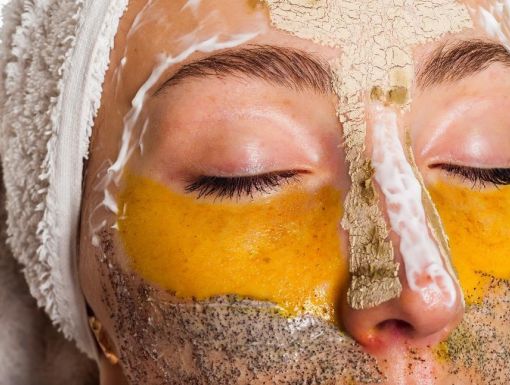
Skincare Tips For Cold Weather
Cold weather, dry air and indoor heating can take a toll on your skin and can flare existing dermatologic disorders, such as eczema. There is even a certain type of eczema, asteatotic eczema, that is also known as “winter itch.” This winter itch is identified by dry, cracked and scaling skin and inflammation. It is important to focus on moisturizing during the winter to minimize winter skin dryness. For better winter skincare, you may need to adjust your routine.
Four winter skin care tips to prevent dry winter skin
- Limit baths and showers to once daily, less than 10 minutes long, and use warm (not hot) water
- Wash with a gentle, fragrance-free cleanser (my favorites are Vanicream Gentle Body Wash, Dove Sensitive Skin Body Wash, and Cetaphil Ultra Gentle Fragrance Free Body Wash)
- Gently pat dry and apply your moisturizer within three minutes of bathing. Reapply moisturizer at least twice daily
- Ointments and creams are more effective than lotions
What are winter weather tips for eczema patients?
- Apply moisturizer more often
- Apply moisturizer after every bath, shower and hand washing
- Moisturize immediately before bed
- Use an ointment. It holds more water in the skin and reduces the risk of irritating the skin. My favorite: Vaniply Ointment and CeraVe Healing Ointment
- Ask your dermatologist if you should use occlusion (applying medicine and then covering with plastic or a bandage) to help very dry skin
- Dress in natural, breathable fabrics like 100% cotton. Wool and synthetic fibers like acrylic and polyester can irritate the skin
- Avoid overheating by dressing in layers that are easily removable
- Limit time spent near radiators, heating vents and fireplaces
What are tips for chapped lips?
- Your lip care products should not burn or sting. Do not mistake burning/stinging/tingling with application of your product as a sign that it is working. If that happens, it means you are irritating your lips
- Apply lip balm or moisturizer several times a day and before bed. A thick ointment to seal in water is best (white petroleum jelly)
- Apply lip balm with SPF 30 or higher (titanium oxide or zinc oxide) before going outside. While outside, apply every two hours
- My favorites: Tizo Lip Protection SPF 45 and EltaMD UV Lip Balm Broad-Spectrum SPF 31
- Drink plenty of water
- Stop licking, biting, and picking at your lips. When you catch yourself licking, apply lip balm instead
- Use a humidifier at home
- See a board-certified dermatologist if these recommendations don’t improve your chapped lips in two to three weeks
What ingredients should you avoid when your lips are chapped?
- Camphor
- Flavoring (especially cinnamon, citrus, mint, peppermint)
- Fragrance
- Eucalyptus
- Lanolin
- Menthol
- Octinoxate or oxybenzone (chemical sunscreens)
- Phenol (or phenyl)
- Propyl gallate
- Salicylic acid
What ingredients should you use to help chapped lips?
- Ceramides
- Dimethicone
- Mineral oil
- Petrolatum
- Titanium oxide or zinc oxide (physical sunscreens)
- White petroleum jelly
What are tips for preventing frostbite?
Going skiing or planning to travel to colder climates? It is critical to protect your skin from the cold when the temperature dips below freezing. The American Academy of Dermatology recommends dressing in loose, light, comfortable layers to help trap warm air.
- The first layer should be made of a synthetic material. This will help wick moisture away from your body
- The next layer should be insulating, such as wool and fleece
- The top layer should be windproof and waterproof
- Protect your feet and toes by wearing two pairs of socks
- The first pair should be made of moisture-wicking fabric
- Place a pair of wool or wool-blend socks on top of those
- Your boots should be waterproof and cover your ankles
- Protect your head and ears by wearing a heavy wool or fleece hat
- You may need to cover your face with a scarf
- Wear insulated mittens or gloves to protect your hands
- Make sure snow cannot get inside of your boots or clothes, as wet clothing increases the risk of frostbite
- It is also important to keep yourself hydrated
- Finally, recognize the symptoms of frostbite. The first signs of frostbite include redness and a stinging, burning, throbbing or prickling sensation followed by numbness
- If you experience these symptoms, go inside immediately. Try to gradually bring feeling back into the body
- Do not rub frostbitten skin or submerge your hands or feet directly into hot water
- Use warm water or a warm washcloth. If you do not feel sensation returning, or if the skin turns gray, go to an emergency room immediately
Schedule a Dermatology appointment with Ochsner Health.



